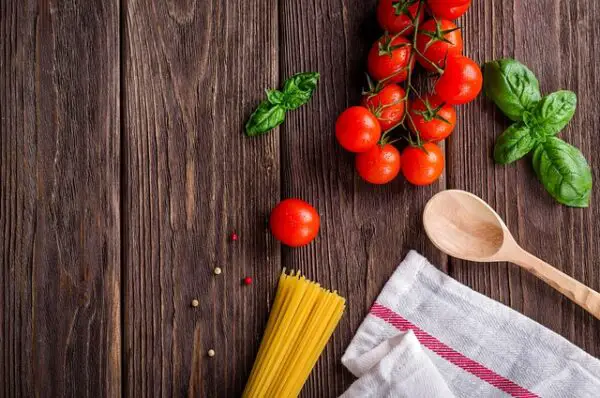Ever wondered if you can freeze cooked pasta? Well, the good news is that you can! Freezing cooked pasta is a convenient way to save time and have a quick meal on hand whenever you need it. Whether you have leftover pasta from a big batch or you want to meal prep for the week, freezing cooked pasta is a simple and effective solution. In this article, you’ll learn all about the best methods to freeze cooked pasta and how to properly thaw and reheat it to maintain its taste and texture. So, if you’re curious about freezing cooked pasta, keep reading!
If you’re looking for ways to make your cooking routine more efficient or if you just want to have some cooked pasta on hand for quick meals, this article is for you. We’ll delve into the ins and outs of freezing cooked pasta, including the best ways to freeze it and how to avoid common pitfalls. You’ll also discover the recommended thawing and reheating methods that will ensure your pasta remains delicious and enjoyable. So, stick around to find out everything you need to know about freezing cooked pasta and make your meal planning a breeze!

Can I Freeze Both Cooked Pasta and Chicken On the Bone?
Yes, you can freeze cooked chicken bone and cooked pasta. Make sure to store them separately in airtight containers or resealable bags to prevent freezer burn. When reheating, ensure the food reaches a safe temperature to avoid foodborne illness. Enjoy your leftover meals with ease!
Can You Freeze Cooked Pasta
Freezing Cooked Pasta: Is It Possible?
If you have ever found yourself with leftover cooked pasta and wondered if you can freeze it, you are not alone. Many people are uncertain about whether freezing cooked pasta is a viable option. The good news is, yes, you can freeze cooked pasta! Freezing cooked pasta allows you to conveniently store and preserve it for later use, minimizing waste and making your meal planning a breeze.
Preparing the Cooked Pasta for Freezing
Before you jump into freezing your cooked pasta, it is essential to take a few preparation steps to ensure optimal results. Start by cooking the pasta al dente, which means slightly undercooking it. This is because freezing and thawing can soften the pasta, so starting with slightly undercooked pasta will help maintain its texture after freezing.
Once the pasta is cooked, drain it thoroughly and rinse it under cold water. Rinsing the pasta will remove any excess starch and prevent it from clumping together when frozen. After rinsing, toss the pasta in a drizzle of olive oil or cooking oil to prevent sticking. Now your cooked pasta is ready for freezing.
Proper Storage Technique for Freezing Cooked Pasta
When it comes to freezing cooked pasta, the storage technique is crucial to maintaining its quality. The most effective way to freeze cooked pasta is by using airtight containers or freezer bags. Ensure that there is no excess air inside the containers or bags as it can cause freezer burn and affect the pasta’s taste and texture.
Divide the cooked pasta into portion sizes that suit your needs before freezing. This will allow you to conveniently thaw only the amount you require for each meal. Fill the containers or bags, leaving about an inch of space at the top to allow for expansion during freezing.
Choosing the Right Container
It is crucial to choose the right container for freezing cooked pasta. Opt for containers that are suitable for freezer storage and made of durable materials such as plastic or glass. Make sure the containers have tight-fitting lids to prevent air and moisture from entering.
Alternatively, you can use freezer bags designed for storing food. These bags are made of thicker plastic and provide an extra layer of protection against freezer burn. They are also flexible and take up less space in the freezer compared to containers.
Labeling and Dating the Frozen Cooked Pasta
To avoid the hassle of guessing how long your cooked pasta has been frozen, it is essential to label and date each container or bag. Use a permanent marker to write the date of freezing on the outside of the container or bag. This will help you keep track of its freshness and ensure you use it within a reasonable timeframe.
Thawing Frozen Cooked Pasta
When you are ready to use your frozen cooked pasta, the thawing process becomes crucial. Thawing the pasta properly will ensure that it retains its texture and taste. The safest way to thaw frozen cooked pasta is by transferring it from the freezer to the refrigerator.
Place the desired portion of frozen cooked pasta in the refrigerator and leave it to thaw overnight. This gradual thawing process will preserve the pasta’s quality and minimize any risk of bacterial growth. Avoid thawing the pasta at room temperature or using hot water, as this can lead to uneven thawing and negatively impact the pasta’s texture.
Reheating Thawed Cooked Pasta
Once your frozen cooked pasta is fully thawed, you can proceed to reheat it before serving. There are several ways to reheat thawed cooked pasta, depending on your preference and the dish you plan to prepare with it.
One common method is to reheat the pasta on the stovetop. Simply place the thawed pasta in a saucepan, add your desired sauce or broth, and cook over medium heat until it is heated through. Stir occasionally to ensure even heating and prevent the pasta from sticking to the bottom of the pan.
Alternatively, you can reheat the pasta in the microwave. Transfer the thawed pasta to a microwave-safe bowl, cover it, and cook in 30-second intervals, stirring in between, until it reaches the desired temperature.
Tips and Tricks for Freezing Cooked Pasta
To make the freezing and reheating process even more efficient, here are some additional tips and tricks:
-
Consider freezing the cooked pasta without the sauce. This will give you more flexibility when it comes to using the pasta later. You can easily pair it with different sauces or incorporate it into various recipes.
-
If you find that your thawed cooked pasta has become slightly soft, consider adding it to a hot dish like a stir-fry or a baked casserole. The heat from the dish will help restore some of the pasta’s texture and firmness.
-
Experiment with different pasta shapes and varieties. While certain pasta shapes may hold up better in the freezer, don’t be afraid to try freezing different types of pasta to see what works best for your taste and preferences.
Alternative Options for Preserving Cooked Pasta
If freezing cooked pasta is not your preferred method of preservation, there are other options to consider. One alternative is storing the cooked pasta in the refrigerator for a few days. Place the pasta in an airtight container or bag and keep it in the refrigerator, where it will stay fresh for up to three days.
Another option is dehydrating the cooked pasta. Dehydrated pasta can be stored at room temperature and rehydrated when needed by boiling it in water for a short time. This method is ideal for backpacking or camping trips where refrigeration or freezing may not be available.
Conclusion
In conclusion, freezing cooked pasta is indeed possible and a great way to reduce food waste and simplify meal planning. By following the proper preparation, storage, thawing, and reheating techniques, you can enjoy the convenience of having cooked pasta readily available whenever you need it. Whether you choose to freeze it with sauce or without, freezing cooked pasta opens up a world of possibilities for quick and delicious meals.



